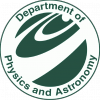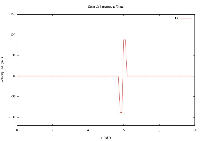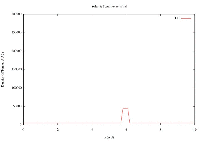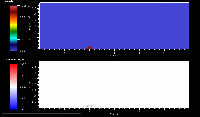User Tools
Sidebar
group8
This is an old revision of the document!
Battle of the Winds
The danger of nearby supernova and the protective power of solar wind
(group 8)
Members: Rashi (Input Person), Raditya (Analysis Person), Alex B. (Code Person)
Procedure
- 1d: steady cloud of gas
- 1d: hit it with supernova shock / plain wave
- 1d: add source → turn cloud into wind
- move to 2d
- parametric study: What is the kill radius at given explosion energy and solar wind strength?
- production of the “Battle of the Winds” movie blockbuster
Code
A commented review of our code modifications can be found under Inside the Code.
Logbook
Date: 06/02/2014
- 1d version of steady cloud of gas created using the following parameters:
- Pressure : pcloud = 1
- Density : rcloud = 1
- Velocity : ucloud = 0
- Ambient density : ramb = 1e-04
- Then we created a 1d shock wave and let it hit the cloud using the following parameters:
- Pressure : pshock = 10000
- Density : rshock = 0.5
- Velocity : vshock = 0
- Having succesfully performed the above two steps, we replced the steady cloud of gas with a source generating outgoing mass flow which basically represents 1d version of the solar wind. For the same, we introduced a velocity of 5 at the center in two oppisite directions and a density of 2.
- Finally we ended the day with hitting the shock wave onto the solar wind to see the interaction beteen the two.
Date : 06/03/2014
- All 3 of us installed netcdf and got the Serial version of VH1 running. Alex worked on setting up the 2D code for the solar wind and the supernova shock.
- Myself and Raditya, figured out the input parameters for the problem using Brian Field's paper on “Supernova Collisions with the Heliosphere”. We tested those parameters on the 1D set-up for the problem, basically we replaced the random numbers we used on 06/02 with real numbers describing the problem in 1D format.
- The resulting density, pressure and velocity plots in 1D looked reasonably good. So we gave those parameters to Alex to be used into the 2D code.
Date : 06/04/2014
- Changed the 2D inputs to more natural units ([L]=1 AU, [T]=1 yr, [M]=10^12 g=1 Mt) because VH-1 would crash when using the cgs system for our problem.
- Fixed an error in our input densities.
- Fixed the bug of density accumulating on the symmetry axis (we use cylindrical coordinates) by setting the density of the two innermost gridpoints in each column to the value of the third. This is a quick and dirty fix and unphysical! However, we think the problem is caused by some boundary condition/ghost zone issue that we were not able to resolve after spending several hours on it. We thank Richard for suggesting this fix!
- Finally running a realistic simulation of the collision, now we are all set for producing a high-res video and a low-res parameter study tomorrow.
Date : 06/05/2014
- Finalized our input parameters based on Brian's paper (density of injected material set to approximately produce 4.5e4 Mt/AU^3 at 1AU):
! ambient material pamb = 3.27e4 !pressure ramb = 5.60e3 !density ! solar wind properties zinj = 4 ! z-coordinate of injection disk radinj = 0.25 ! 1e18 ! injection disk radius widthinj = 1.6 ! width of injection disk (radinj/widthinj <= r <= radinj) vinj = 88.75 ! velocity of injected material pinj = pamb ! pressure of injected material rinj = 20*4.54e4 ! density of injected material ! SNR shock ncycleshock = 4500 !number of cycles to wait for solar wind to settle before shock vshock = 128.6 !velocity of shock material pshock = 1.23e8 !pressure of shock material rshock = 2.24e4 !density of shock material
- 1D-Simulation use some settings of Cartesian coordinate, zero-gradient boundaries, planar and constant solar & supernova winds
Velocity Profile
Density Profile
- Generated high-res simulations (10×4 AU, 750×250 gridpoints) for the presentation (click on the image to show gif (33MB):
- Did a parameter study on a reduced grid (6×2 AU, 300×100 gridpoints) to determine the dependence of the penetration radius on the densities of the SNR and solar wind.
- Figured out how to create animated gifs / videos of the NetCDF files using VisIt
- Created our presentation
group8.1402065157.txt.gz · Last modified: 2014/06/06 10:32 by bartl
Except where otherwise noted, content on this wiki is licensed under the following license: CC Attribution-Share Alike 4.0 International







